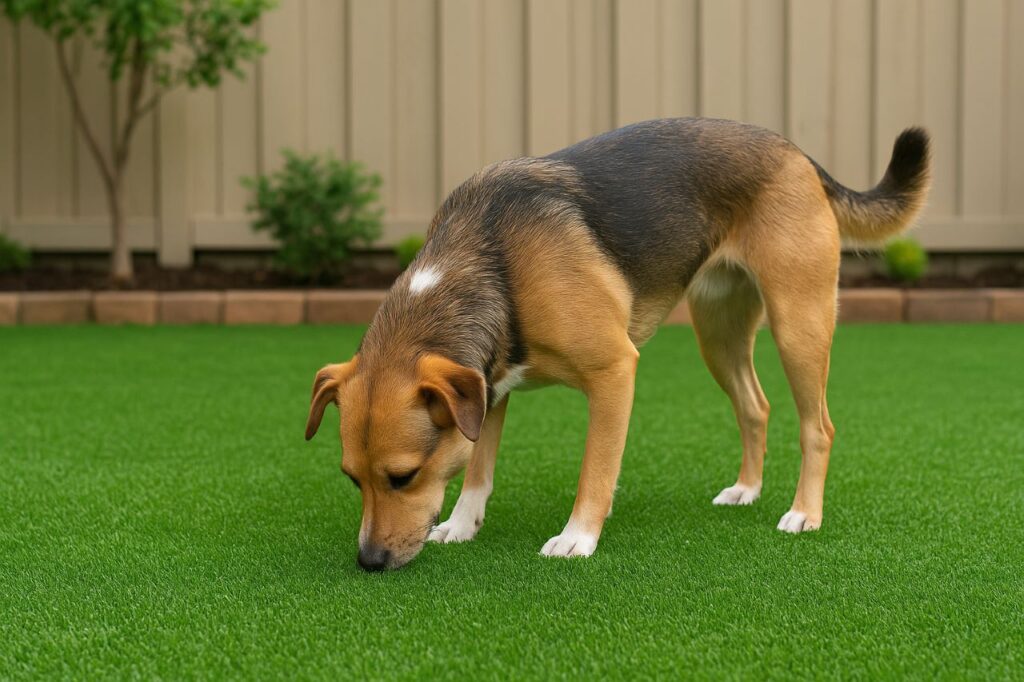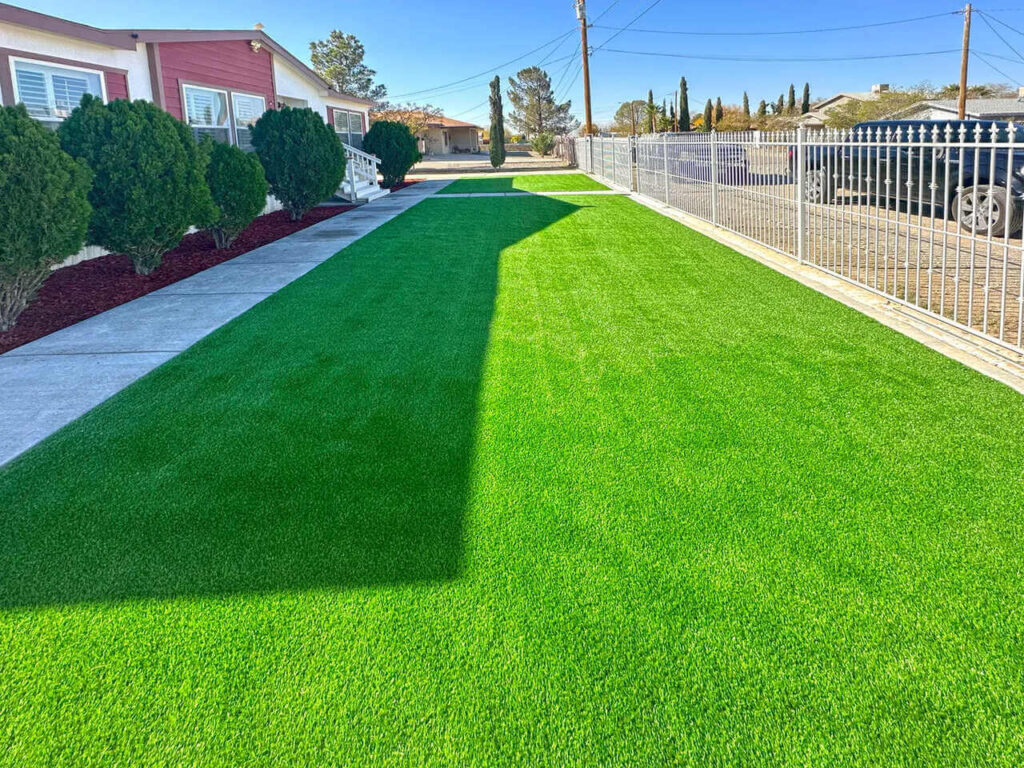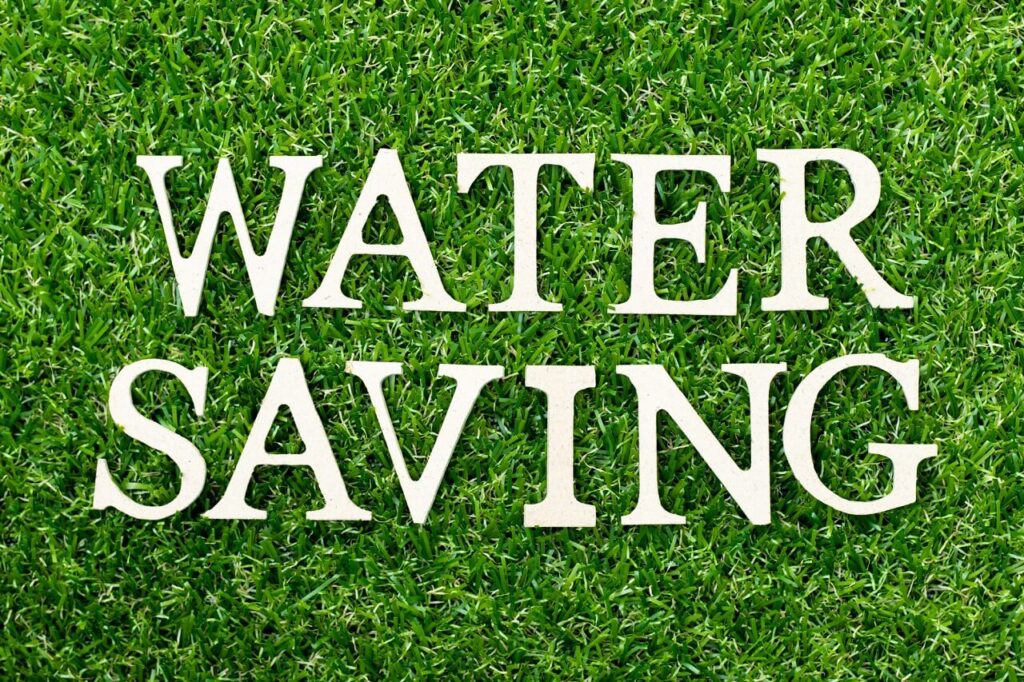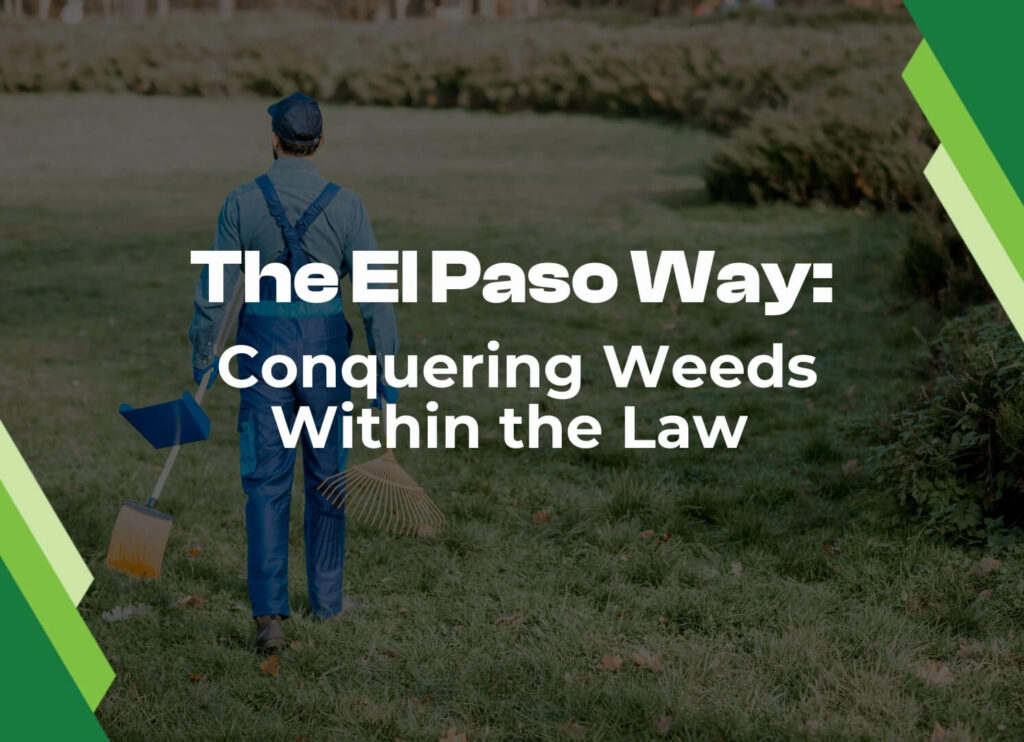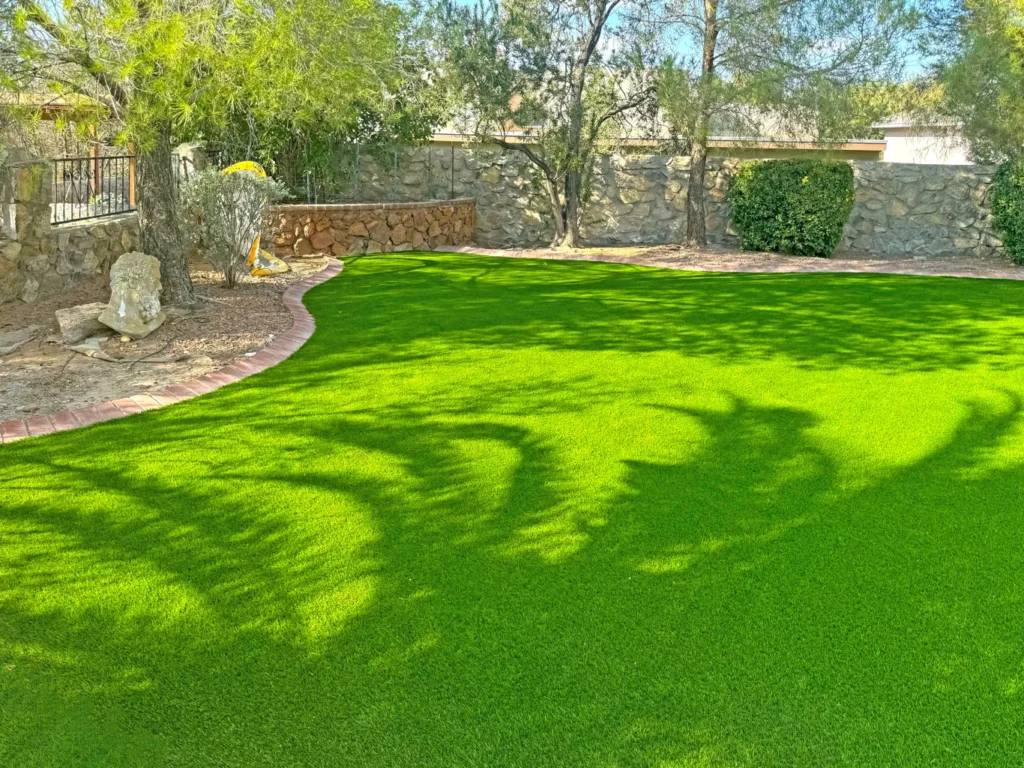Living in sunny El Paso, Texas, you might be considering artificial grass for a lush, low-maintenance lawn. A common concern, though, is whether artificial turf gets hot in the sun. While it can heat up, modern synthetic turf is designed to remain comfortable and usable with simple solutions.
In this article, we’ll explore why turf gets hot, how hot it can get, and practical tips to keep your artificial grass cool and enjoyable even in the Texas heat.
Does Artificial Turf Get Hot in the Sun?
Yes, artificial turf will get warm in direct sunlight, much like many outdoor surfaces. Unlike natural grass, synthetic grass doesn’t have moisture that evaporates to cool the surface, leading it to absorb and retain heat more readily. However, it’s usually cooler than surfaces like concrete, asphalt, or patio pavers under similar conditions.
Older studies reported turf temperatures up to 150–170°F, but these typically involved outdated products or rubber infill on athletic fields. Today’s residential turf products are engineered differently and stay significantly cooler.
Most homeowners find artificial grass comfortably usable with a few simple adjustments during the hottest days. Compared to other landscaping surfaces, artificial grass often provides a more pleasant experience.
Why Does Artificial Turf Get So Hot?
There are a few key reasons why synthetic turf can heat up more than natural grass:
Lack of Natural Cooling
Natural grass contains water, which evaporates to cool the surface. Artificial turf, typically made from polyethylene, polypropylene, or nylon, lacks moisture and therefore can’t self-cool.
Synthetic Materials
Plastic fibers in artificial grass absorb heat more readily than natural grass. Backing materials and infill can also contribute significantly to heat retention.
Color
Darker colors absorb more sunlight and get hotter. Turf typically uses deep greens to mimic natural grass, which can lead to increased heat. However, lighter shades or reflective pigments help reduce heat absorption.
Turf Density and Blade Shape
Dense, tightly packed turf traps heat due to reduced airflow. Modern designs use specialized blade shapes and less dense configurations, allowing more air circulation and less heat retention.
Infill Type
Infill supports turf blades and affects heat levels significantly. Dark crumb rubber infill absorbs considerable heat, whereas silica sand or mineral-based infills remain cooler. Some infills even include cooling technology to minimize heat.
All these factors combine to influence how hot your artificial lawn might feel. The bottom line is that turf gets hot because it’s synthetic and dry. But each of these factors can be addressed by choosing the right type of turf and installation methods for a cooler result.
How Hot Does Artificial Turf Get?
Surface temperatures on artificial turf during hot weather depend on the product and conditions. In full sun with air temperatures around 100°F, turf surfaces can reach 120–150°F or more. For comparison, natural grass might be about 90–95°F under the same conditions. However, artificial grass surfaces typically cool quickly once shaded or sprayed with water.
While these peak surface temperatures seem high, it’s essential to note this is similar to other common yard surfaces like concrete or patio stones, which can get equally or even more uncomfortable in extreme heat. Additionally, modern turf won’t melt or degrade under typical outdoor conditions, as it is specifically designed to withstand high temperatures.
Is Artificial Turf Hotter Than Natural Grass?
Yes, generally artificial turf runs hotter than natural grass under direct sunlight because it lacks moisture-based cooling. Natural grass, through transpiration and evaporation, can remain near or slightly below ambient air temperatures.
On average, synthetic turf surfaces might measure 10–30°F hotter than natural grass on hot days. For instance, if real grass is around 95°F, artificial turf could range between 110–120°F.
Yet, this temperature difference doesn’t make artificial grass unusable or unsafe. Realistically, few outdoor surfaces remain comfortable under direct sun at midday, including natural grass, decks, or playground surfaces. With proper planning and minor adjustments, artificial grass remains a practical, enjoyable, and highly usable choice.
Modern advancements have further reduced the heat gap. Products now incorporate reflective yarns and specialized infills, bringing turf temperatures closer to natural grass.
Tips to Keep Artificial Grass Cool in Hot Weather
You can easily manage and significantly reduce artificial grass temperatures with these practical tips:
Choose Turf Designed for Hot Climates
Not all artificial grass products handle heat equally. Look for turf engineered with cooling technology or reflective materials that significantly reduce heat absorption. High-quality synthetic grass can remain noticeably cooler compared to lower-grade options.
Opt for the Right Infill
Avoid dark crumb rubber infill, which absorbs significant heat. Instead, choose silica sand, acrylic-coated sand, or specialized cooling infills designed to reflect sunlight and remain cool. A proper infill choice dramatically improves your lawn’s comfort in heat.
Provide Shade
Shade significantly reduces turf temperatures. Strategically placed trees, shrubs, pergolas, shade sails, or patio umbrellas over high-use areas help keep your turf comfortable throughout hot days. Even partial shade can greatly enhance your lawn’s usability and comfort.
Quick Rinse with Water
On extremely hot days, briefly spraying turf with water can quickly lower surface temperatures by 30–50°F. Though artificial grass doesn’t need regular watering, occasional rinsing dramatically increases comfort and cleanliness, using far less water than natural lawns.
Routine Maintenance to Prevent Compaction
Occasional brushing helps keep turf fibers upright, improving air circulation and reducing heat retention. Brushing turf periodically, especially in high-traffic areas, maintains optimal airflow and keeps your lawn cooler and more comfortable.
Professional Installation and Advice
Proper installation by professionals ensures optimal performance and comfort. Experts will advise on materials, proper drainage, ventilation, and best practices to minimize heat. Proper preparation significantly reduces future heat-related issues.
By following these tips, you can enjoy a plush green lawn that’s as cool and inviting as possible. Many families in desert climates use a combination of the above strategies to great success.
For instance, a homeowner might install a light-colored, cooling-infill turf and also add a shade sail over a play area for the kids. Another might simply keep a hose by the patio to wet down a pet’s favorite spot before playtime.
Figure out what works for your yard and lifestyle.
Remember: even on the hottest days, you’re usually not spending extended time on any unshaded surface at high noon. Artificial grass is no exception, but it’s easy to make it comfortable whenever you want to use it!
Enjoying Your Artificial Lawn in the Heat
While artificial turf can warm up under intense sunlight, today’s advanced turf products and simple cooling strategies make it easy to manage.
In hot climates like El Paso, homeowners regularly enjoy their synthetic lawns by using a few straightforward solutions. Even during peak summer, artificial grass remains a smart, water-saving, and visually appealing choice.
With the right turf, infill, occasional rinsing, shade, and basic maintenance, your lawn can stay cool, comfortable, and ready to enjoy. Don’t let heat concerns hold you back from the many benefits of a lush, low-maintenance yard.

